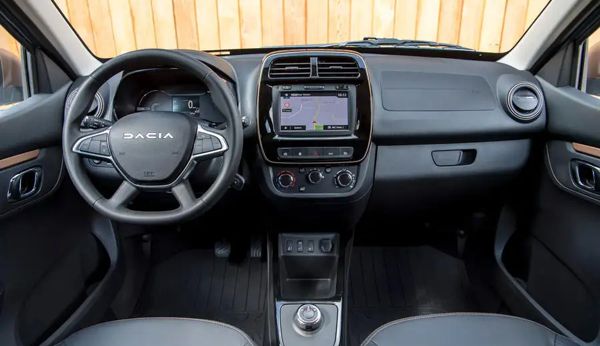Published
on 31
May 2024
|
All rights reserved.
|
|
|

|
|
Priced
from £15,000, how can the Dacia urban EV be so cheap?
|
|
This is the cheapest
electric car you can buy in Europe, being sold from €18,000 before
incentives. In UK, it starts at £15,000 and tops out at
£17,000, significantly cheaper than the next least expensive EV
on the market, the £22,000 Citroen e-C3. How can Renault group
managed to build it so cheaply?
Firstly, from its humble origin. The little Dacia was not conceived as
a modern European EV from the outset. Instead, it started life in 2015
as Renault Kwid, an A-segment petrol minicar designed and built by the
Indian operation of Renault to serve the local market. A couple of
years later its production expanded to Brazil, and then in 2019 Renault
derived an electric version from the car and built it in the
joint-venture with Dongfeng Motors in China. By 2021, it was improved
and exported to Europe under the Dacia Spring badge. Continuous
improvement followed, and by this year it gets another facelift and
interior revamp. As you see, with its roots traced back so long and
from developing countries, its development costs spread thin.
Secondly, the Spring is really small. Measuring just 3.7 meters long
and less than 1.6 meters wide, it falls into the smallest class in
Europe. Even though it is an EV, it tips the scale at under 1 ton when
empty, which means smaller battery, motor, brakes, wheels and axles
etc. can be used.

|
|
Its
humble origin is most evident in the cabin...
|
|
The cabin is not too small though. Predictably, the rear seats have
limited legroom and are more suitable to children, but still easily
roomier than a Fiat 500. The boot is not bad at 288 liters, and there
is a small compartment under bonnet to store charging cables.
Thirdly, it is not built to the standards of European cars. This is
most obvious in the cabin, where hard shinny plastics dominate. The
switchgears feel cheap, and some buttons on the steering wheel are even
left blank. The steering wheel itself is fixed, while front seats don’t
adjust for height. Perhaps that is why the car is badged as Dacia
instead of Renault. That said, the 2024 facelift brings a much more
modern dashboard and even a 10-inch touchscreen on top trims.
While European version has gained some safety equipment mandated by
laws, such as extra airbags, automatic emergency braking, lane-keep
assist and driver attention warning, it is difficult to wash away the
infamous 1-star rating granted by Euro NCAP in 2021.

|
|
Slow and not
designed to excite, but it works as an urban car very well indeed.
|
|
Fourthly, the car’s battery is not only small but it uses low-cost LFP
(Lithium iron phosphate) chemistry, which does without expensive metal
like cobalt and nickel. Its drawback is lower energy density and slower
charging, but considering the battery capacity is only 27.4kWh gross
(or 26.8kWh net), it doesn’t weigh excessively so, and charging takes a
reasonable 5 hours using 7kW wallbox. While its DC charge rate looks
laughable at only 50kW, charging from 20-80 percent takes an acceptable
half an hour.
As for range, 137-140 miles (depending on motor option) is claimed,
meaning a real-world usage of around 110 miles. Use strictly as a city
car as the car is intended to, it is plenty capable.
Fifthly, the Spring is not supposed to be hurried, so it can use a
small motor with either 45 hp or 65 hp output. 0-60 mph time of 18 or
13 seconds are nothing to write about. Its drivers are certainly not
interested to exploit the car’s 78 mph Vmax, because if they do so,
they will find themselves drowned in a great deal of wind and tire
noise (as well as a persistent noise from the fan heater) – all are
evidence of the car’s lack of sound insulation and NVH suppression.

|
|
2024 facelift
brings some welcomed styling enhancement and an overhauled interior.
|
|
Similarly, the chassis is designed purely for urban driving, with its
long-travel, soft-setting suspension soaking up bigger bumps well but
failing to tie down the car at faster undulations. Push it harder in
corner and the body will lean heavily, although that is to be expected
for an urban small car. The steering moderately weighted but feels
remote, giving little information about the grip ahead.
Lastly but not least, the Dacia Spring is built in China in the
aforementioned JV with Dongfeng. China has a vast supply chain, low
labour costs and plenty of local government incentives to build up its
battery and EV industries. Also cheap coal-fire power plants to supply
dirty electricity for making the batteries. All put the Dacia at an
unfair advantage. However, the EU is studying ways to block this
loophole. France, for example, has passed new regulations to mandate
EVs to do life-cycle assessment, passing minimum requirements before
qualifying for EV grants. Under this scenario, Chinese-built cars will
be difficult or even impossible to get government grants, seriously
hurting their sales prospect in France. Even though the Dacia belongs
to Renault group in which the French government holds 15 percent
stakes, the Spring could be effectively forced out of the French
market. Never mind, because Citroen e-C3 will take up most of its
sales.
|
Verdict:   |
|